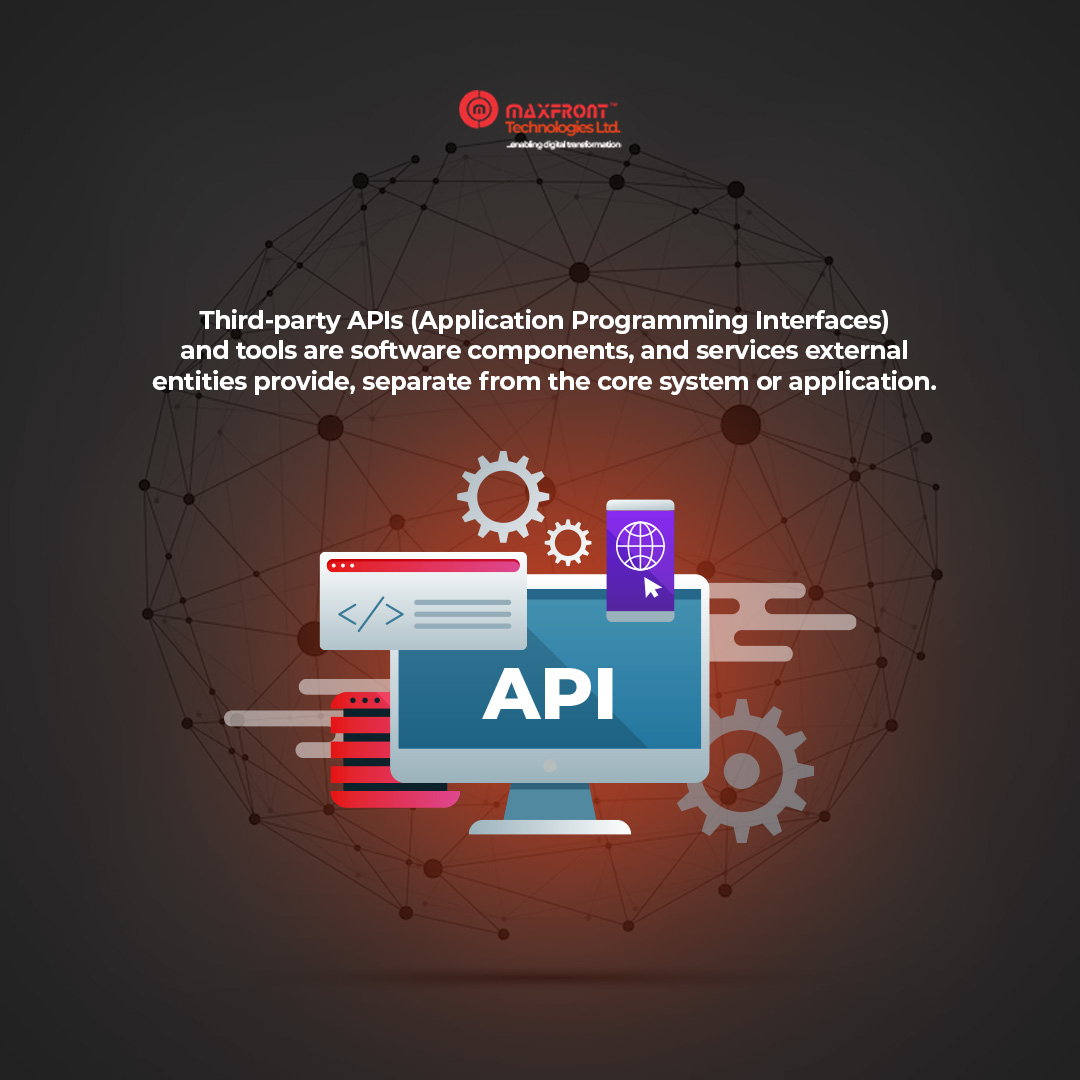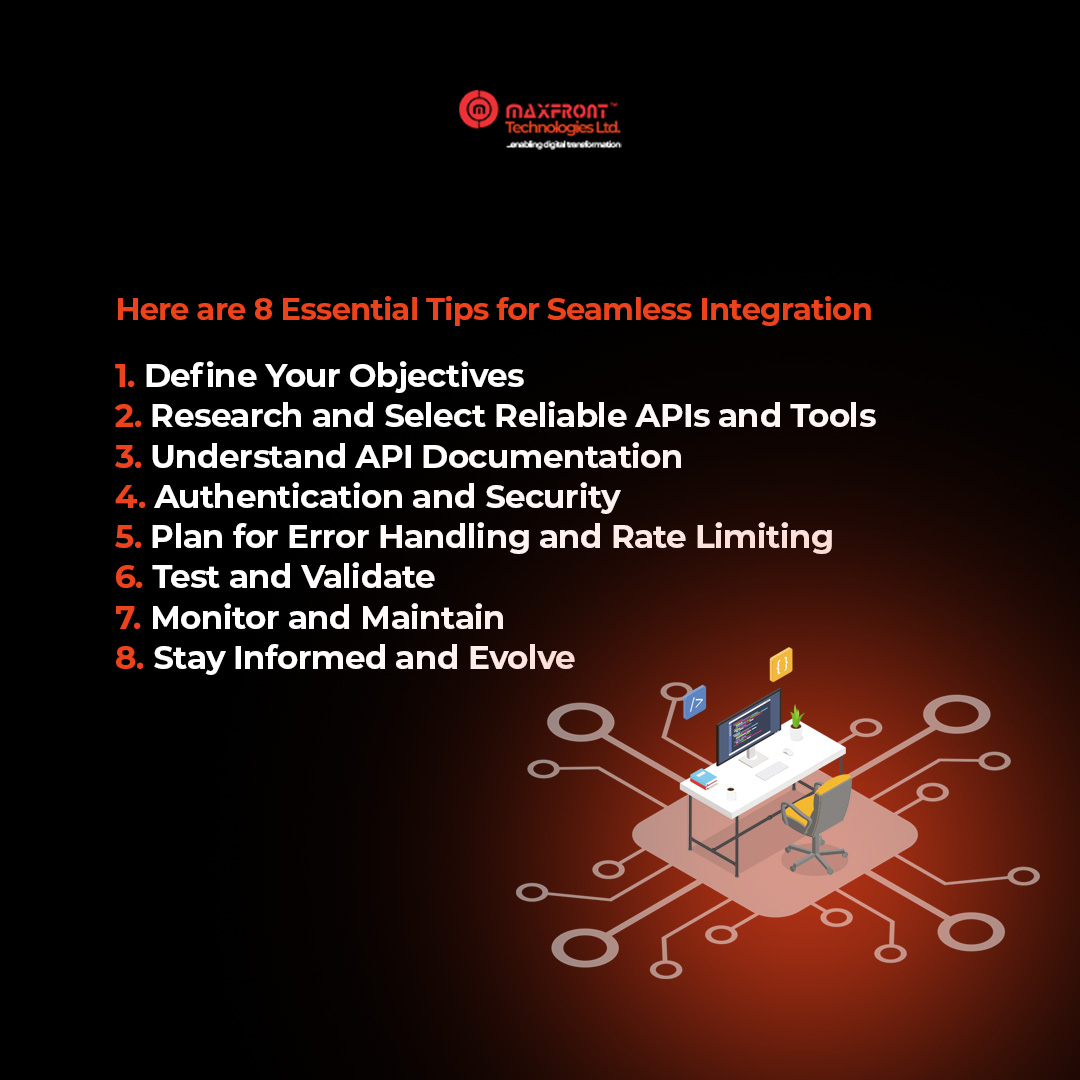
In today’s interconnected digital landscape, leveraging third-party APIs and tools has become a game-changer for businesses and developers. These powerful resources play a crucial role in enhancing the functionality and capabilities of applications; they enable us to enhance our applications, streamline processes, and access a wide range of functionalities without reinventing the wheel.
However, effectively integrating these APIs and tools can sometimes take time and effort. In this blog post, we’ll first define third-party APIs and tools and then explore the advantages of seamless integration before we dive into essential tips and best practices to help you seamlessly integrate and leverage third-party APIs and tools. Understanding these concepts will help you harness the power of these resources effectively. Businesses and developers can leverage a wide range of benefits by seamlessly integrating these external resources.
Third-party APIs (Application Programming Interfaces) and tools are software components, and services external entities provide, separate from the core system or application. These APIs and tools allow developers to extend the functionality of their applications by integrating with external services, libraries, or platforms. They provide pre-built functions, methods, and resources that can be utilized to enhance and expand the capabilities of a software system.
Seamless integration of third-party APIs and tools offers numerous advantages to businesses and developers. These include enhanced functionality, time and cost savings, access to specialized expertise, scalability and flexibility, improved user experience, integration with external ecosystems, rapid innovation, and increased user satisfaction and retention.
Third-party APIs and tools are often developed and maintained by experts in their respective domains, allowing developers to tap into specialized knowledge and take advantage of industry best practices without acquiring the same level of expertise internally. Integration with external ecosystems enables applications to connect and interact with a broader range of external systems, expanding their reach and functionality. Rapid innovation enables developers to leverage the ongoing innovations and updates provided by external entities, accelerating the development process and keeping applications up-to-date with the latest advancements in the industry.
Here are 8 Essential Tips for Seamless Integration:

- Define Your Objectives: Before diving into API integration, it’s crucial to define your objectives clearly. Identify the specific functionalities or features you want to incorporate into your application. This will help you choose the right APIs and tools that align with your goals and ensure a focused integration strategy.
- Research and Select Reliable APIs and Tools: With countless APIs and tools available, conducting thorough research and choosing reliable providers is essential. Look for well-documented APIs with a track record of stability, good support, and regular updates. Read reviews, check their community forums, and consult industry experts to gauge the reputation and reliability of the APIs and tools you’re considering.
- Understand API Documentation: API documentation is your roadmap to successful integration. Take the time to thoroughly read and understand the documentation provided by the API provider. It should outline the endpoints, request/response formats, authentication methods, rate limits, and specific requirements. Familiarize yourself with the available endpoints and their functionalities to ensure a smooth integration process.
- Authentication and Security: API authentication and security are paramount to protecting your application and user data. Most APIs use authentication mechanisms such as API keys, OAuth, or token-based authentication. Follow the authentication guidelines provided by the API provider to secure your API requests and prevent unauthorized access.
- Plan for Error Handling and Rate Limiting: Handling errors gracefully and respecting API rate limits are essential for integration. Understand the various error codes and responses provided by the API and implement robust error-handling mechanisms in your application. Additionally, monitor and respect the rate limits defined by the API provider to avoid disruptions or penalties.
- Test and Validate: Thorough testing is crucial to ensure the smooth functioning of your integration. Create test environments or sandboxes to simulate API interactions and validate the responses. Test various scenarios, edge cases, and potential error conditions to identify and address any integration issues early on.
- Monitor and Maintain: Once your integration is up and running, monitoring its performance and ensuring ongoing maintenance is essential. Implement monitoring tools to track API usage, response times, and errors or exceptions. Stay updated with API provider announcements, bug fixes, and new versions to ensure your integration remains compatible and optimized.
- Stay Informed and Evolve: The technology landscape is ever-evolving, and APIs and tools are no exception. Stay informed about the latest updates, advancements, and new offerings in the API ecosystem. Regularly evaluate your integration to identify opportunities for optimization or enhancements. Being adaptable and open to new possibilities will help you stay ahead of the curve.
In summary, integrating third-party APIs and tools enables businesses and developers to extend the functionality of their applications, save time and costs, access expertise, improve scalability and flexibility, enhance user experience, integrate with external ecosystems, and stay at the forefront of innovation.
Integrating third-party APIs and tools can revolutionize how we develop applications and unlock possibilities. By following these essential tips for seamless integration, you’ll be well-equipped to effectively leverage the power of APIs and tools. Remember to define your objectives, select reliable providers, understand API documentation, prioritize authentication and security, handle errors and rate limits, test rigorously, monitor and maintain, and stay informed. Embrace the potential of third-party APIs and tools, and let them take your applications to new heights of innovation and efficiency.